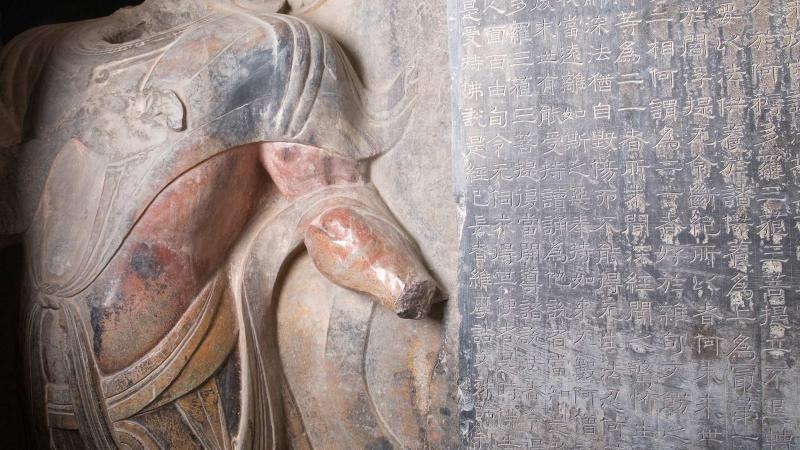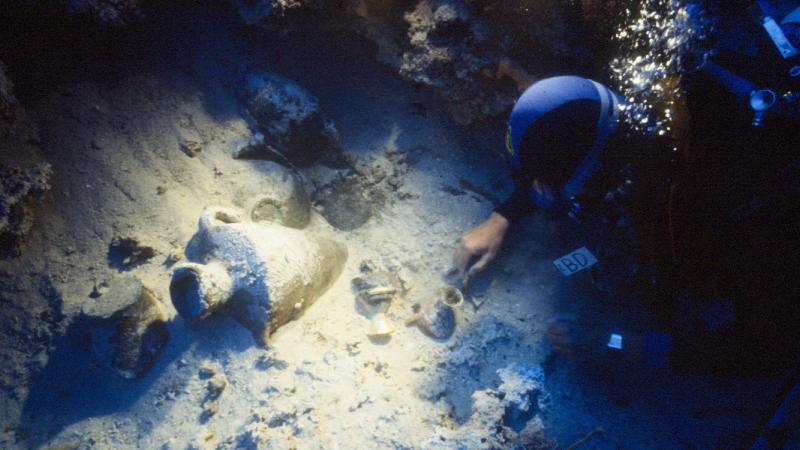Johan Reinhard scaled Peru’s Mount Ampato to photograph a nearby erupting volcano. He already took some photos from a distance, but wanted more dramatic images to accompany a publication funded with $34,500 from NEH.
Near the summit, his climbing partner, Miguel Zárate, spotted a cloth bundle.
“Maybe it’s a climber’s backpack?” Zárate suggested.
“Maybe it’s a climber,” Reinhard replied, half-joking. He was right.
The bundle contained a mummified, 14-year-old Inca girl, now known as the “Ice Maiden” or “Juanita.” Five hundred years before, she climbed 20,702-foot Ampato as part of a religious rite in which she was the sacrifice, killed by a single blow to the head. She was then buried with other offerings, including elaborately clothed statues, pottery, and food.
The Inca rarely sacrificed children—only when confronted by extreme or cataclysmic events such as droughts, an emperor’s death, or volcanic eruptions. Ash found beneath a platform on Ampato indicates Juanita may have been sacrificed after a volcano erupted, most likely the same one that led to her discovery half-a-millennium later.
Children selected for sacrifice had to be physically perfect and pure enough to join the gods as ambassadors of their people. At least a year before the rite occurred, they began receiving special treatment in preparation.
“They were, in a sense, becoming deified themselves,” Reinhard says.
Juanita’s discovery in 1995 captured the world’s attention, making headlines across the Americas, but also in Europe and Asia. The first female mummy to be discovered in the Andes, her body was also well preserved. Unfortunately, sun exposure desiccated the Ice Maiden’s face before Reinhard and Zárate found her.
Children, in particular, found the Ice Maiden fascinating. When Reinhard returned to Ampato to excavate the site further, classrooms monitored his progress online and grew even more excited as he uncovered two more mummies. Reinhard also wrote a children’s book about the find, Discovering the Inca Ice Maiden, illustrated with some of his own photographs. When National Geographic brought the Ice Maiden to Washington, D.C., for a special exhibit, thousands of people came to see her. Viewing time was limited to six minutes per person to accommodate the crowds, and Reinhard had to sneak in the back to prevent being mobbed by fans.
Juanita’s discovery led to a surge of interest in excavating other high-altitude sites identified by Reinhard during his NEH research. More funding allowed him to reach and excavate them before looters arrived.
Eager for gold and silver statues to sell on the black market, looters pose a constant threat to high-altitude archaeological sites, which are difficult to protect. Some even use dynamite to blast through the ice, decapitating or disintegrating any mummies below in the process.
Of the Andean digs that followed the Ice Maiden discovery, the most important was at Volcán Llullaillaco, 22,100-feet high and on the border between Argentina and Chile.
In 1999, Reinhard and his team found three mummies there, including another “ice maiden” to capture the world’s imagination. The 13-year-old is so perfectly preserved, she appears to have just fallen asleep with her cheek gently resting against her shoulder.
As technology develops and scientists study the Llullaillaco mummies, the three child mummies continue to reveal information about the Incas and their world.
Written by Victoria Cooney, a writer in St. Paul, Minnesota.


